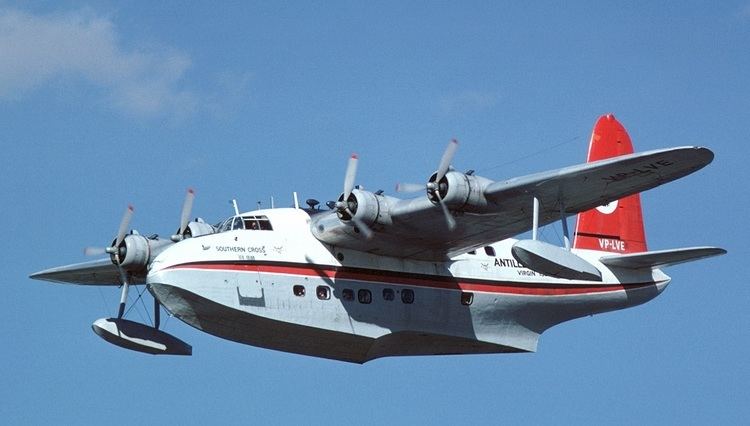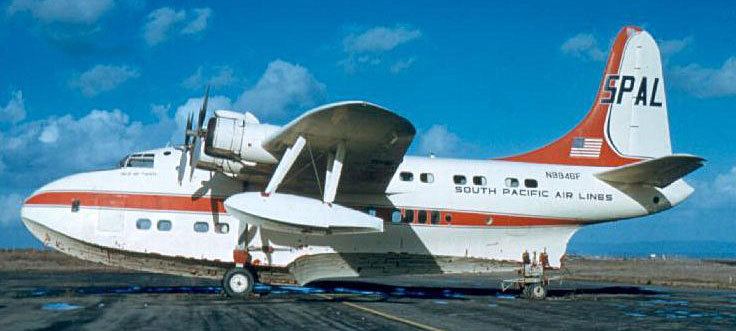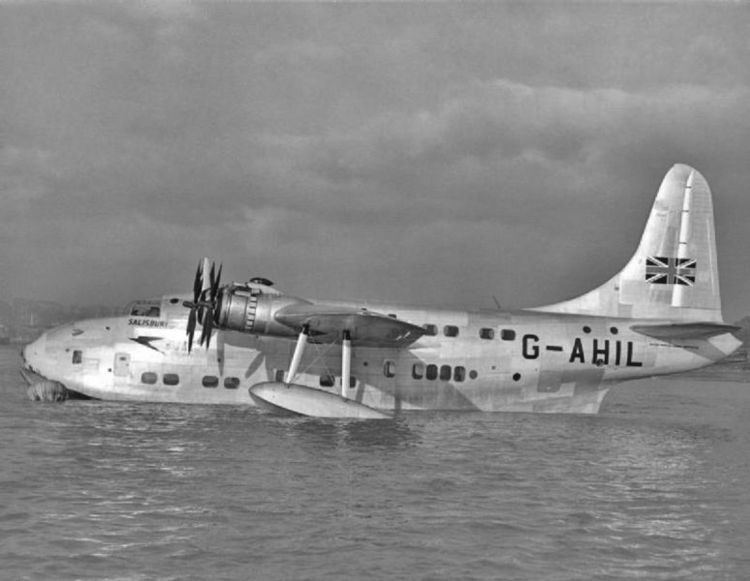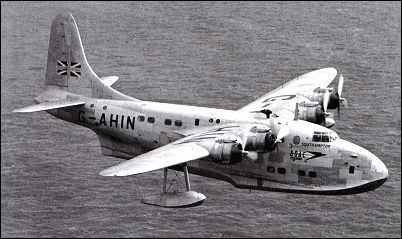Top speed 439 km/h Wingspan 34 m First flight November 11, 1946 | Range 2,900 km Length 27 m | |
 | ||
Engine type Bristol Hercules 637 radial piston | ||
Indiana jones short solent mark iii passenger flying boat passenger compartments tour 3 4
The Short Solent was a passenger flying boat produced by Short Brothers in the late 1940s. It was developed from the Short Seaford, itself a development of the Short Sunderland military flying boat design, which was too late to serve in World War II.
Contents
- Indiana jones short solent mark iii passenger flying boat passenger compartments tour 3 4
- Indiana jones short solent mark iii passenger flying boat cockpit tour 2 4
- Design and development
- Use
- Survivors
- Variants
- Operators
- Specifications Solent 2
- References

The first Solent flew in 1946. New Solents were used by BOAC and TEAL, production ending in 1949. Second-hand aircraft were operated until 1958 by a number of small airlines such as Aquila Airways.

Indiana jones short solent mark iii passenger flying boat cockpit tour 2 4
Design and development

The Short S.45 Solent was a high-wing monoplane flying boat of aluminium construction. Power was provided by four Bristol Hercules engines.

The aircraft could be fitted for 24 passengers with day and night accommodation or 36 day passengers. The cabins (four on the lower deck and two on the upper) could be used to sleep four or seat six. The upper deck included a lounge/dining area next to kitchen; the lower deck had two dressing rooms, toilets and three freight compartments. The flight crew was five (two pilots, navigator, and radio operator with the flight engineer in a separate compartment behind the flight deck opposite crew rest berths) and there were two stewards to attend to the passengers.
Use

The Solent 2 introduced by BOAC could carry 34 passengers and 7 crew. Between 1948 and 1950, BOAC operated their Solents on the three-times weekly scheduled service from Southampton to Johannesburg taking a route down the Nile and across East Africa. The journey took four days, including overnight stops. The Solents replaced Avro Yorks running the service. The last Solent-operated service on the route departed from Berth 50 at Southampton on 10 November 1950, bringing BOAC's flying-boat operations to an end.
Tasman Empire Airways Limited (TEAL) operated a total of five Solent 4s between 1949 and 1960 on their scheduled routes between Sydney, Fiji and Auckland. The last TEAL Solent service was flown between Fiji and Tahiti on 14 September 1960 by ZK-AMO "Aranui", which is now preserved. The TEAL Solents could carry 45 passengers and all versions of the type provided a great deal of space and luxury compared with contemporary or modern land-based aircraft.
Several Solents served Aquila Airways on their routes from Southampton to Madeira and the Canary Islands using ex BOAC and TEAL aircraft. On 15 November 1957, Aquila Airways G-AKNU, a Solent 3, crashed near Chessell, Isle of Wight, after it experienced loss of power to two engines. The crash killed 45 out of the 58 on board. British commercial flying-boat operations ceased on 30 September 1958 when Aquila Airways withdrew its Madeira service.
Survivors
Variants
Operators
The only military use of the Solent was for trials at the United Kingdom Marine Aircraft Experimental Establishment in 1951, the former BOAC Solent 3 was scrapped after the trials.
Specifications (Solent 2)
Data from Barnes and James
General characteristics
Performance
